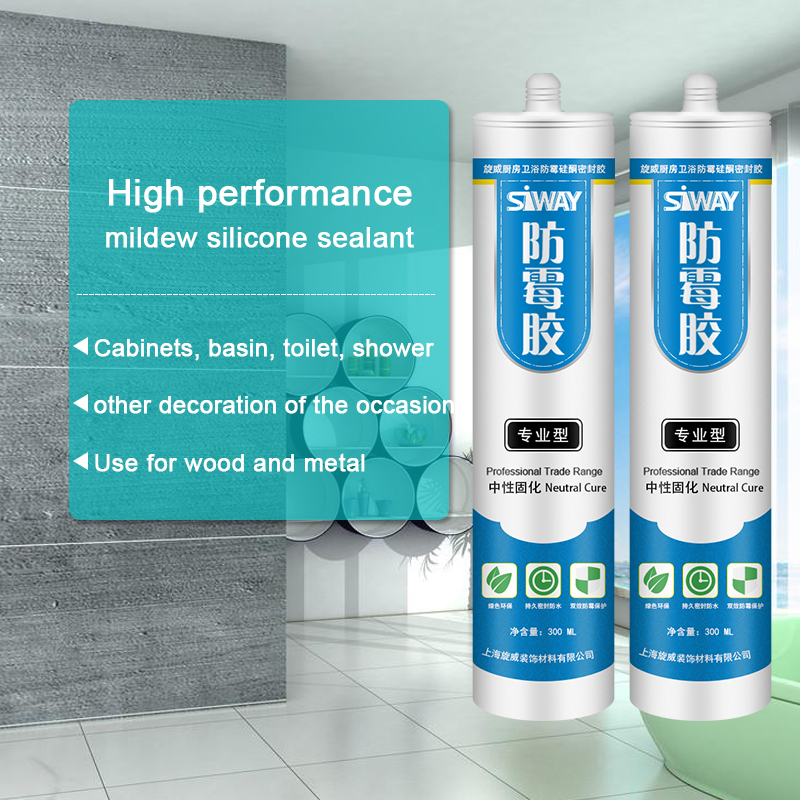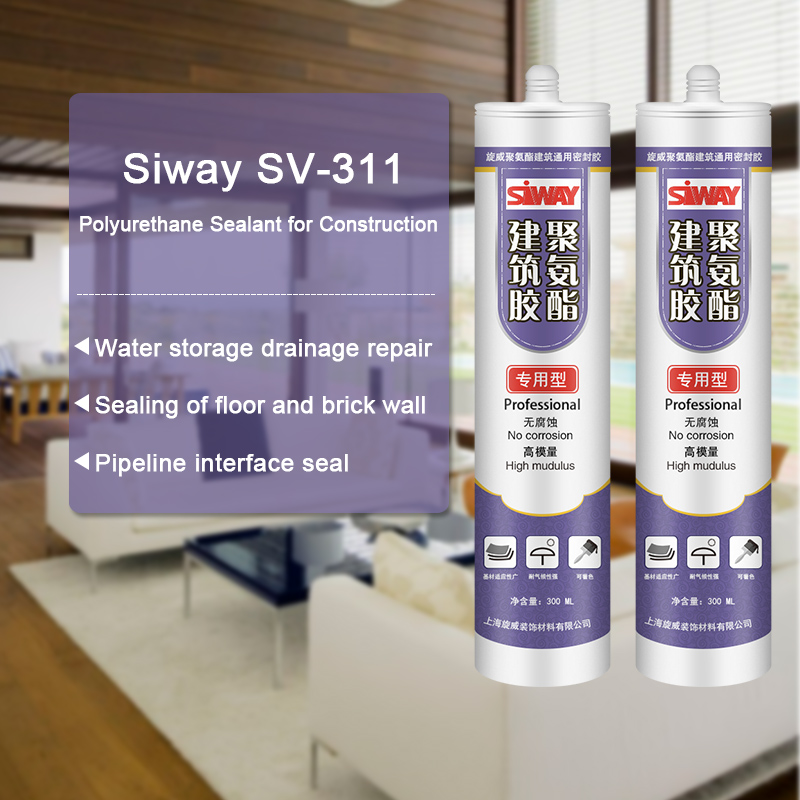25 Years Factory SV-8890 Two-component Silicone Structural Glazing Sealant to Japan Factories
Short Description:
Description SV8890 is neutral curing, designed for glass, stone, marble, granite, aluminum curtain wall and glass daylighting roof and metal structural engineering structural adhesive seal designed silicone sealant structure, excellent bonding performance of structure and the weathering resistance, after artificial accelerated weathering test, various physical and chemical properties have no obvious change in the sealant. When using, SV8890 with dedicated two-component glue machine constructi...
"Sincerity, Innovation, Rigorousness, and Efficiency" is the persistent conception of our company for the long-term to develop together with customers for mutual reciprocity and mutual benefit for 25 Years Factory SV-8890 Two-component Silicone Structural Glazing Sealant to Japan Factories, winning customers' trust is the gold key to our success! If you are interested in our products, please feel free to visit our web site or contact us.
Description
SV8890 is neutral curing, designed for glass, stone, marble, granite, aluminum curtain wall and glass daylighting roof and metal structural engineering structural adhesive seal designed silicone sealant structure, excellent bonding performance of structure and the weathering resistance, after artificial accelerated weathering test, various physical and chemical properties have no obvious change in the sealant. When using, SV8890 with dedicated two-component glue machine construction, two kinds of components in accordance with the provisions, mixing ratio after curing form elastomer.
Key Features
1. None sag
2. Adjustable working time
3. Excellent adhesion to most building substrates
4. High bonding strength and modulus
5.12.5%movement capability
6. Silicone durability
Basic Application
1.Glass, stone, marble, granite, aluminum curtain wall and glass daylighting roof and metal structural engineering structural adhesive seal;
2.Insulating Glass of the second seal
3.Many other building and industrial applications
Technical data sheet
| Test project | Unit | value |
| Flow, sagging or vertical flow | mm | 0 |
| Operating time | min | 20 |
| surface drying time(25℃,50%R.H.) | min | 40-60 |
| Durometer Hardness | Shore A | 20-60 |
| At 23 ℃ maximum tensile strength elongation | % | ≥100 |
| Tensile strength(23℃) | Mpa | 0.9 |
| Tensile strength(90℃) | Mpa | 0.68 |
| Tensile strength(-30℃) | Mpa | 0.68 |
| Tensile strength(flooding) | Mpa | 0.68 |
| Tensile strength(flooding – ultraviolet) | Mpa | 0.68 |
| Bond damage area | % | 5 |
| Thermal aging(thermal weight loss) | % | ≤5 |
| Thermal aging(crack) | No | |
| Thermal aging(efflorescence) | No |
Certification
GB 16776
Color
Component A(Base) – White, Component B(Catalyst)- Black
Package
1. Component A(Base): (190L), Component B(Catalyst) (18.5L)
2. Component A(Base):24.5kg (18L), Component B(Catalyst): 1.9kg (1.8L)
Shelf life
12 months
Note
If you want the TDS or MSDS or other details, please contact with our sales person.
ANCHORSEAL 963- 2 PART POLYSULPHIDE SEALANT – POURING & GUN GRADE – 2 part polysulphide construction sealant
Making a Cavity Pour Mold with Mold Max 30 RTV Silicone Rubber from Smooth-On.
Our model is a hand-carved hard wood 3-dimensional figure. Drill an air release hole in to the middle of a baseboard. Secure model to baseboard with screws. Apply plastic wrap to the original model to protect the surface. Cover the model with 1/2-inch (1.3 cm) clay blanket. Create a 2-inch (5.1 cm) flange for registration. Build a 3-inch (7.6 cm) clay dividing wall and apply clay supports. Drill indentations in the baseboard to register shell. Build a clay pour spout and a 1/2-inch clay dam. Apply Sonite Wax to baseboard and then apply Ease Release 200 to the entire surface.
Measure and mix duoMatrix NEO with a mix ratio of 2A:1B. Combine parts and mix thoroughly. For the first layer, apply a detail coat to the first half. Measure and mix duoMatrix NEO with chopped fiber. Apply this as the second layer. Apply a third layer of duoMatrix NEO without chopped fiber. A wood support leg is attached using duoMatrix NEO. Let cure for one hour.
Once the NEO has cured, remove the dividing wall. Drill indentations into shell for registration. Build a clay dam and pour spout. Apply Sonite Wax to baseboard and exposed shell and then apply Ease Release 200 to the entire surface. Measure and mix NEO for the second half of the support shell, following the same procedure used to create the first half. Again, a wood support leg is attached using NEO and the shell is allowed to cure one hour at room temperature. A rasp is used to create a smooth flange edge, and then three holes are drilled through the support shell. Bolts will help secure the support shell during casting.
Demold the support shell halves, remove the plastic wrap from the model, and then remove clay from the support shell. Create vent holes in support shell to allow air to escape. A 1/4-inch (6 mm) drill bit is used to drill holes through the support shell for a total of six air vents. Apply release agent to both the model and support shell. Register the support shell over the model and secure. Use bolts to hold the support shell halves together. Drywall screws are used to secure the support shell to the baseboard. Seal all seams with a hot glue gun. Place drinking straws into pre-drilled holes for air release, using clay to help secure and seal the straw. Only 1/4-inch of the straw will go into the support shell. IMPORTANT: Do not allow the drinking straws to touch the model. Trim the top two straws for easier access to the pour spout.
Measure and mix Mold Max 30 silicone rubber. Then vacuum the Mold Max 30. After vacuuming, pour Mold Max 30 into the pour spout. Cap the top of the straws with clay to stop the flow of rubber, saving material. Continue to pour rubber until the cavity is filled. Let Mold Max 30 rubber cure for 16 hours at room temperature. Once cured, remove the support shell and rubber mold from the model. Perfect detail is captured from the original model.
How to cast into the mold:
The mold is first primed with auto body primer. Smooth-Cast 300 liquid plastic is measured, mixed, and poured into the mold. After three minutes, the liquid plastic turns to a solid. Let Smooth-Cast 300 cure for 10 minutes at room temperature. Remove the support shell and demold casting. A perfect reproduction! The casting is ready to be painted.
Make It Now! with Smooth-On
https://www.smooth-on.com/
https://www.facebook.com/SmoothOn
https://twitter.com/SmoothOn
https://www.google.com/+smoothon






